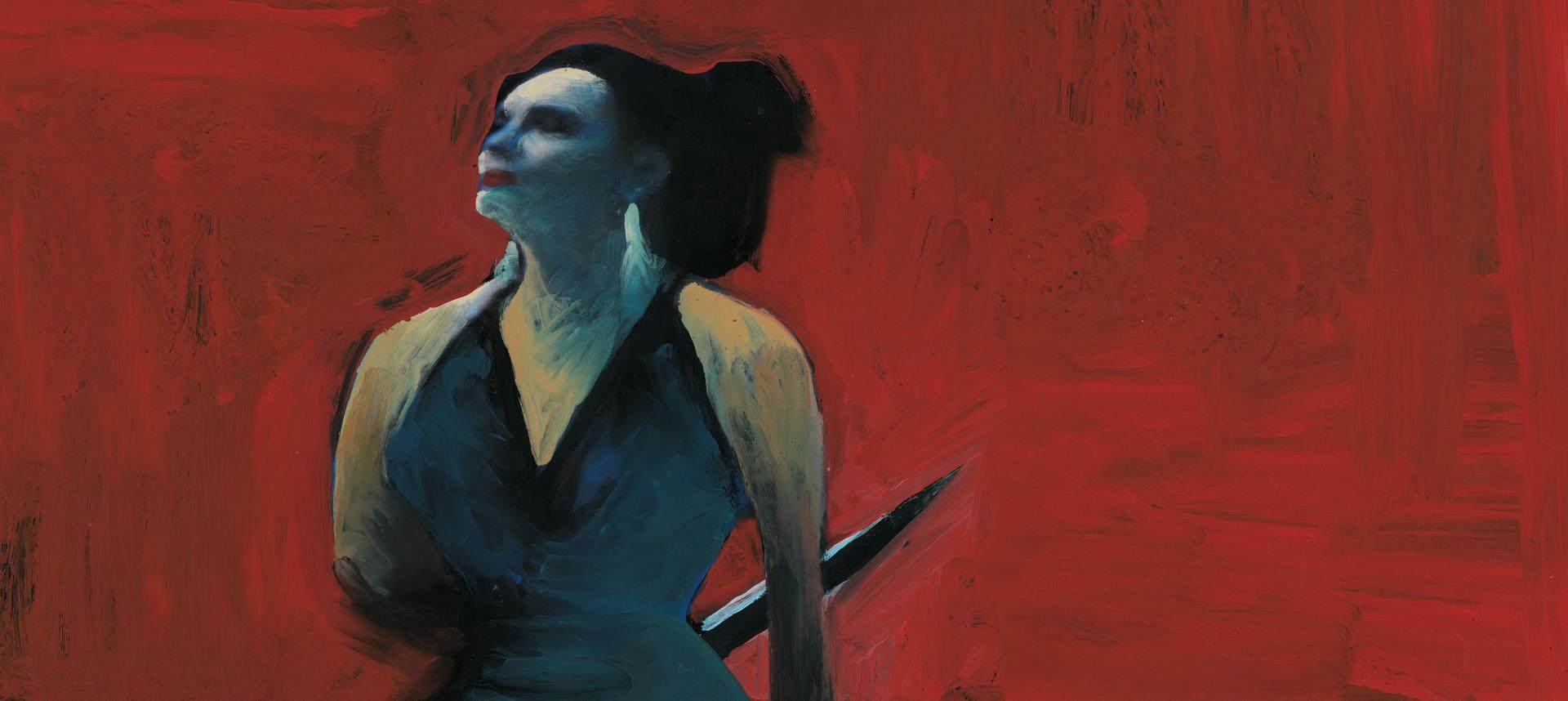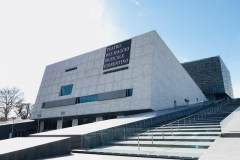Tosca
January 2026 | ||||||
|---|---|---|---|---|---|---|
Mo | Tu | We | Th | Fr | Sa | Su |
Tosca – Giacomo Puccini | Opera
Part I: 50 minutes | Intermission: 30 minutes | Part II: 45 minutes | Intermission: 30 minutes | Part III: 30 minutes
Total duration: approximately 3 hours and 5 minutes
Returning to the Maggio is the production of Tosca, Puccini’s masterpiece, directed by Massimo Popolizio and conducted by Michele Gamba. On January 14, 1900, Tosca, an opera in three acts by Giacomo Puccini with a libretto by Luigi Illica and Giuseppe Giacosa, premiered at the Teatro Costanzi in Rome. The source was the historical drama La Tosca by Victorien Sardou, written in 1887 especially for the actress Sarah Bernhardt. Puccini became passionate about the subject after attending a theatrical performance and did everything possible to turn it into an opera. However, the publisher Ricordi initially assigned the project to another composer, Alberto Franchetti, only to return it to Puccini in 1895. For the libretto of Tosca, the tried-and-true duo Illica and Giacosa, already successful with La bohème, was confirmed again. Work, however, proceeded slowly, with numerous complaints from the librettists, who considered Sardou’s drama unsuitable for operatic adaptation because of the excessive number of events overwhelming the poetry. Puccini, on the other hand, was undeterred, following his musical intuition, and in 1899 created what would soon become another of his great masterpieces. Tosca is therefore an opera of action, in which the tension never eases and the musical discourse must move forward without interruption, except for rare moments. This led the composer from Lucca to adopt a narrative technique based on a dense network of short, recurring motifs—often combined with one another—to underscore the frenetic unfolding of the plot. The action takes place in papal Rome at the time of the Battle of Marengo. The protagonists—Floria Tosca, a passionate and strong-willed prima donna, and her lover Mario Cavaradossi, a painter with liberal and anticlerical convictions—are thwarted by Baron Scarpia, the chief of the Bourbon police in the service of the papacy. Driven by dark passions and innate cruelty, the Baron, like a sadistic puppeteer, controls the course of events from beginning to end. A fierce persecutor first of Mario and then of Tosca (until he is killed by her after an attempted assault), Scarpia continues to haunt the orchestra even after his death, through the repetition of his menacing theme built on the tritone—the sinister interval long associated in music with Evil. The dramatic atmosphere of the story, which includes three violent deaths on stage (a stabbing, a firing squad, and a suicide), is further intensified by Puccini’s orchestral writing, full of dissonances and tension that foreshadow Expressionism, and by a vocal style often pushed to its emotional and technical limits.
Production by the Maggio Musicale Fiorentino
Cast updated as of June 30, 2024
Synopsis
Act 1
Inside the church of Sant'Andrea della Valle
Cesare Angelotti, former consul of the Roman Republic and now an escaped political prisoner, runs into the church and hides in the Attavanti private chapel – his sister, the Marchesa Attavanti, has left a key to the chapel hidden at the feet of the statue of the Madonna. The elderly Sacristan enters and begins cleaning. The Sacristan kneels in prayer as the Angelus sounds.
The painter Mario Cavaradossi arrives to continue work on his picture of Mary Magdalene. The Sacristan identifies a likeness between the portrait and a blonde-haired woman who has been visiting the church recently (unknown to him, it is Angelotti's sister the Marchesa). Cavaradossi describes the "hidden harmony" ("Recondita armonia") in the contrast between the blonde beauty of his painting and his dark-haired lover, the singer Floria Tosca. The Sacristan mumbles his disapproval before leaving.
Angelotti emerges and tells Cavaradossi, an old friend who has republican sympathies, that he is being pursued by the Chief of Police, Baron Scarpia. Cavaradossi promises to assist him after nightfall. Tosca's voice is heard, calling to Cavaradossi. Cavaradossi gives Angelotti his basket of food and Angelotti hurriedly returns to his hiding place.
Tosca enters and suspiciously asks Cavaradossi what he has been doing – she thinks that he has been talking to another woman. After Cavaradossi reassures her, Tosca tries to persuade him to take her to his villa that evening: "Non la sospiri, la nostra casetta" ("Do you not long for our little cottage"). She then expresses jealousy over the woman in the painting, whom she recognises as the Marchesa Attavanti. Cavaradossi explains the likeness; he has merely observed the Marchesa at prayer in the church. He reassures Tosca of his fidelity and asks her what eyes could be more beautiful than her own: "Qual'occhio al mondo" ("What eyes in the world").
After Tosca has left, Angelotti reappears and discusses with the painter his plan to flee disguised as a woman, using clothes left in the chapel by his sister. Cavaradossi gives Angelotti a key to his villa, suggesting that he hide in a disused well in the garden. The sound of a cannon signals that Angelotti's escape has been discovered. He and Cavaradossi hasten out of the church.
The Sacristan re-enters with choristers, celebrating the news that Napoleon has apparently been defeated at Marengo. The celebrations cease abruptly with the entry of Scarpia, his henchman Spoletta and several police agents. They have heard that Angelotti has sought refuge in the church. Scarpia orders a search, and the empty food basket and a fan bearing the Attavanti coat of arms are found in the chapel. Scarpia questions the Sacristan, and his suspicions are aroused further when he learns that Cavaradossi has been in the church; Scarpia mistrusts the painter, and believes him complicit in Angelotti's escape.
When Tosca arrives looking for her lover, Scarpia artfully arouses her jealous instincts by implying a relationship between the painter and the Marchesa Attavanti. He draws Tosca's attention to the fan and suggests that someone must have surprised the lovers in the chapel. Tosca falls for his deceit; enraged, she rushes off to confront Cavaradossi. Scarpia orders Spoletta and his agents to follow her, assuming she will lead them to Cavaradossi and Angelotti. He privately gloats as he reveals his intentions to possess Tosca and execute Cavaradossi. A procession enters the church singing the Te Deum; exclaiming 'Tosca, you make me forget even God!', Scarpia joins the chorus in the prayer.
Act 2
Scarpia's apartment in the Palazzo Farnese, that evening
Scarpia, at supper, sends a note to Tosca asking her to come to his apartment, anticipating that two of his goals will soon be fulfilled at once. His agent, Spoletta, arrives to report that Angelotti remains at large, but Cavaradossi has been arrested for questioning. He is brought in, and an interrogation ensues. As the painter steadfastly denies knowing anything about Angelotti's escape, Tosca's voice is heard singing a celebratory cantata elsewhere in the Palace.
She enters the apartment in time to see Cavaradossi being escorted to an antechamber. All he has time to say is that she mustn't tell them anything. Scarpia then claims she can save her lover from indescribable pain if she reveals Angelotti's hiding place. She resists, but the sound of screams coming through the door eventually breaks her down, and she tells Scarpia to search the well in the garden of Cavaradossi's villa.
Scarpia orders his torturers to cease, and the bloodied painter is dragged back in. He is devastated to discover that Tosca has betrayed his friend. Sciarrone, another agent, then enters with news: there was an upset on the battlefield at Marengo, and the French are marching on Rome. Cavaradossi, unable to contain himself, gloats to Scarpia that his rule of terror will soon be at an end. This is enough for the police to consider him guilty, and they haul him away to be executed.
Scarpia, now alone with Tosca, proposes a bargain: if she gives herself to him, Cavaradossi will be freed. She is revolted, and repeatedly rejects his advances, but she hears the drums outside announcing an execution. As Scarpia awaits her decision, she prays, asking why God has abandoned her in her hour of need: "Vissi d'arte" ("I lived for art"). She tries to offer money, but Scarpia is not interested in that kind of bribe: he wants Tosca herself.
Spoletta returns with the news that Angelotti has killed himself upon discovery, and that everything is in place for Cavaradossi's execution. Scarpia hesitates to give the order, looking to Tosca, and despairingly she agrees to submit to him. He tells Spoletta to arrange a mock execution, both men repeating that it will be "as we did with Count Palmieri", and Spoletta exits.
Tosca insists that Scarpia must provide safe-conduct out of Rome for herself and Cavaradossi. He easily agrees to this and heads to his desk. While he's drafting the document, she quietly takes a knife from the supper table. Scarpia triumphantly strides toward Tosca. When he begins to embrace her, she stabs him, crying "this is Tosca's kiss!" Once she's certain he's dead, she ruefully says "now I forgive him." She removes the safe-conduct from his pocket, lights candles in a gesture of piety, and places a crucifix on the body before leaving.
Act 3
The upper parts of the Castel Sant'Angelo, early the following morning
A shepherd boy is heard offstage singing (in Romanesco dialect) "Io de' sospiri" ("I give you sighs") as church bells sound for matins. The guards lead Cavaradossi in and a jailer informs him that he has one hour to live. He declines to see a priest, but asks permission to write a letter to Tosca. He begins to write, but is soon overwhelmed by memories: "E lucevan le stelle" ("And the stars shone").
Tosca enters and shows him the safe-conduct pass she has obtained, adding that she has killed Scarpia and that the imminent execution is a sham. Cavaradossi must feign death, after which they can flee together before Scarpia's body is discovered. Cavaradossi is awestruck by his gentle lover's courage: "O dolci mani" ("Oh sweet hands"). The pair ecstatically imagine the life they will share, far from Rome. Tosca then anxiously coaches Cavaradossi on how to play dead when the firing squad shoots at him with blanks. He promises he will fall "like Tosca in the theatre".
Cavaradossi is led away, and Tosca watches with increasing impatience as the firing squad prepares. The men fire, and Tosca praises the realism of his fall, "Ecco un artista!" ("What an actor!"). Once the soldiers have left, she hurries towards Cavaradossi, urging him, "Mario, su presto!" ("Mario, up quickly!"), only to find that Scarpia betrayed her: the bullets were real. Heartbroken, she clasps her lover's lifeless body and weeps.
The voices of Spoletta, Sciarrone, and the soldiers are heard, shouting that Scarpia is dead and Tosca has killed him. As the men rush in, Tosca rises, evades their clutches, and runs to the parapet. Crying "O Scarpia, avanti a Dio!" ("O Scarpia, we meet before God!"), she flings herself over the edge to her death.
Program and cast
Conductor and Music Director – Michele Gamba
Chorus Master – Lorenzo Fratini
Stage Director – Massimo Popolizio
Set Design – Margherita Palli
Costumes – Silvia Aymonino
Lighting – Pasquale Mari
Orchestra and Chorus of the Maggio Musicale Fiorentino
Children’s Chorus of the Accademia del Maggio Musicale Fiorentino
Children’s Chorus Master – Sara Matteucci
Floria Tosca – Chiara Isotton / Marta Mari (15, 17)
Mario Cavaradossi – Vincenzo Costanzo / Bror Magnus Tødenes (15, 17)
Scarpia – Alexey Markov / Claudio Sgura (15, 17)
Cesare Angelotti – Mattia Denti
The Sacristan – Matteo Torcaso
Spoletta – Oronzo D’Urso
Sciarrone – Huigang Liu
Teatro del Maggio Florence State Opera Italy
Teatro del Maggio is in the centre, close to the old city walls, next to the historic Stazione Leopolda. The garden that welcomes visitors is Piazzale Vittorio Gui, named after the founder of the Stabile Orchestrale Fiorentina and the Maggio Musicale Fiorentino.
By train
Santa Maria Novella is Florence's main train station.
From there you can reach the theatre with a short walk (about 10-15 minutes) or by taking the tram (a stop) or a taxi.
By car
The Opera di Firenze is just outside the ZTL area.
It is possible to park near the Parco delle Cascine or for a fee in the Porta al Prato car park (Via Elio Gabbuggiani, 7) and in the Piazza Vittorio Veneto car park.
By bus
Lines C1, C2 and D (Leopolda stop);
Lines 17 and 23A-B (stop Via delle Carra);
Lines 17B-C, 22, 23N, 23 and 57 (Pierluigi da Palestrina stop);
Lines 29, 29B, 29BA, 29BC, 29D, 30A, 30B, 30AC, 35 and 35° (stop Leopolda - Porta al Prato; Capolinea).
By tram
Line T1 (stop Porta al Prato - Parco della musica).

 EN
EN DE
DE IT
IT FR
FR ES
ES RU
RU JP
JP RO
RO
 Seating plan
Seating plan 